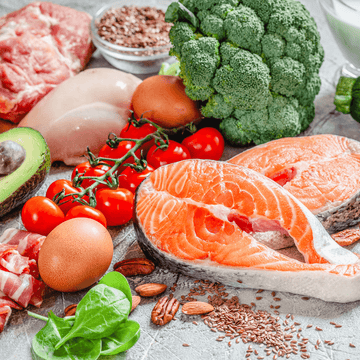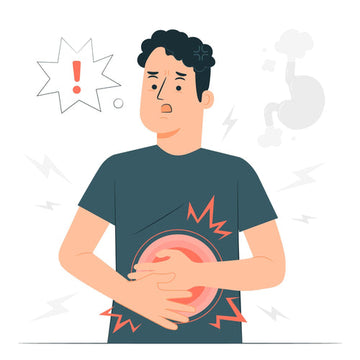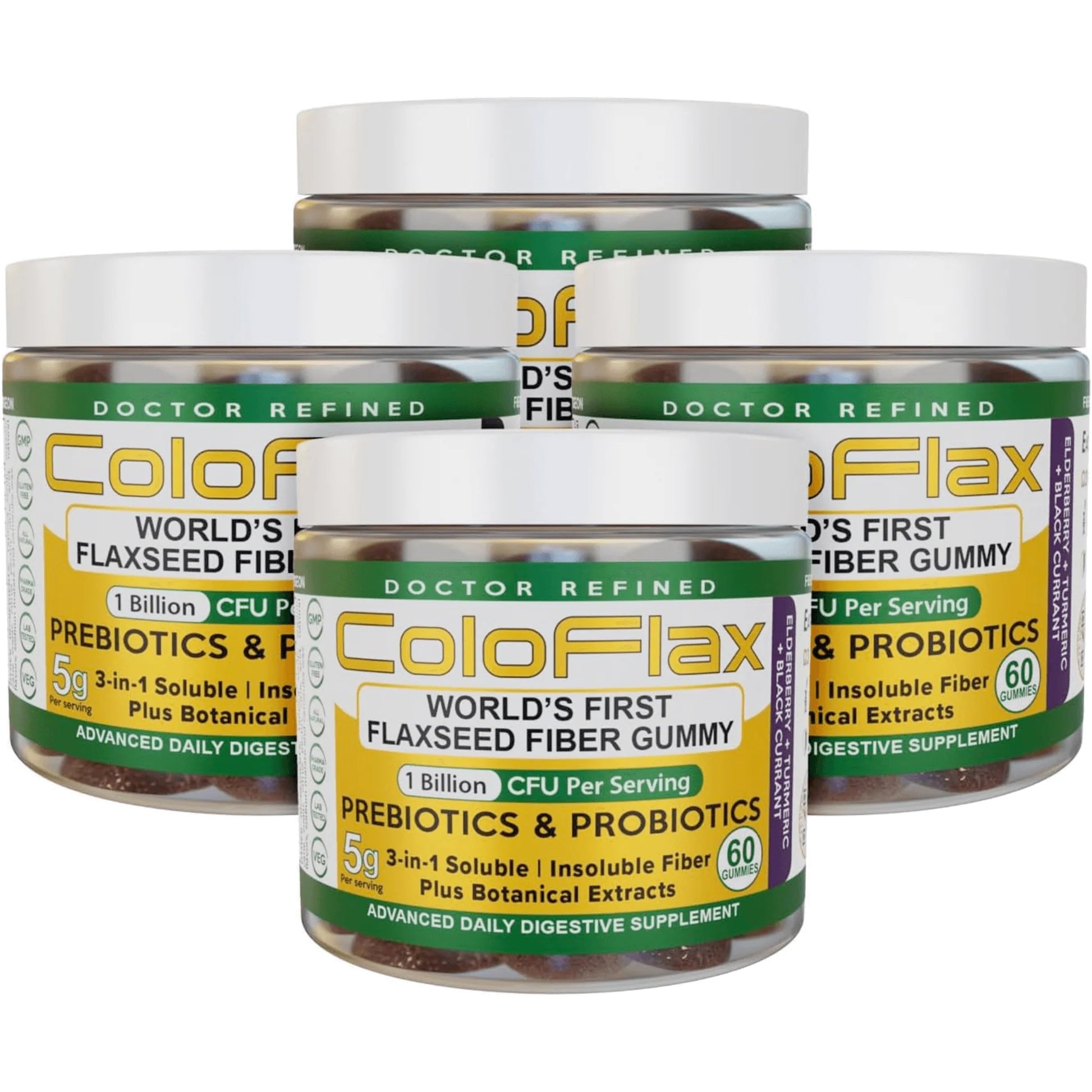Are you struggling to meet your daily fiber needs? Can’t get your fill from your usual fare? Most Americans consume between 10 and 15g of fiber a day, which is around a third to a half of what they should be eating. If you’re one of them, you’re probably looking at that 25g to 30g daily fiber recommendation in horror and wondering how you can get anywhere near it.
Well, it’s easier than you might think, and in this guide, we’ll show you why.
The Best High Fiber Meals
First, let’s look at some high-fiber and delicious meals that you can consider adding to your diet. All of these dishes are packed full of fiber and nutrients, and many of them contain fewer than 400 calories.
If you thought that high-fiber food was all about bran cereal, bland bean dishes, and copious amounts of fiber supplements, think again:
|
High Fiber Foods |
Fiber Per Serving |
|
Avocado on Whole Wheat Toast |
8.5g |
|
Baba Ghanoush |
4g |
|
Beef and Bean Sloppy Joes |
8.4g |
|
Beef and Vegetable Stew |
4.8g |
|
Black Bean Quesadillas |
5.9g |
|
Chicken Burritos |
9.6g |
|
Chickpea Soup with Whole Wheat Bread |
13.1g |
|
Chicken and Asparagus with Whole Wheat Pasta |
8g |
|
Fasolada |
9.6g |
|
Fava Greek Dip |
13.4g |
|
Fakes Greek Soup |
5.1g |
|
Greek Chicken and Potatoes |
2.8g |
|
Grilled Portobello Mushroom Burgers |
6g |
|
Gigantes |
6.1g |
|
Gemista |
7g |
|
Minestrone Soup |
4.2g |
|
Moussaka |
13g |
|
Mexican Chili |
10.7g |
|
Oatmeal with Apple and Pears |
7.1g |
|
Philly Steak Sandwich |
6.2g |
|
Plain Popcorn |
6g |
|
Roasted Squash Soup |
11.9g |
|
Vegetarian Chili |
8g |
Which Cuisine Has the Most Fiber?
If you know your world cuisine, you’ll recognize that many of the meals listed above are Greek or Mexican, and this is not a coincidence.
Mexican cuisine uses a lot of fresh vegetables and beans, and these are some of the best foods you can eat to get your fiber fix. As for the Greeks, they consume many vegetables and legumes, and there are all kinds of dips, soups, and salads that come packed with fiber.
Other cuisines to consider include:
- Japanese: The Japanese diet is one of the healthiest in the world and includes lots of fresh vegetables and beans.
- Korean: Fermented foods like kimchi are high in fiber and probiotics, so they can work wonders on your digestive health. Just watch out for the sodium levels, as they can be quite high.
- Italian: The Italian diet is very similar to the Greek diet, with plenty of salads, tomatoes, and olive oil. It tends to be much heavier on the bread and pasta, but if you can keep this to a minimum, you’ll get lots of fiber.
- Spanish: The Spanish love their fresh salads, soups, and vegetables. Spanish breakfast dishes in particular are a great way to start the day, as they are high in protein, fiber, and nutrients, and they also taste great.
- Indian: Turmeric, root vegetables, spices, prebiotics, probiotics—Indian cuisine is great for your gut. There are probably more vegetarian meals here than in any other popular cuisine, and if you don’t like spice you can just tone it down.
- Lebanese: If you love your dips and salads, look no further than Lebanon. Lebanese hummus, muhammara, and Fattoush are some of the tastiest foods in the world, and there are also great dips made from beans and eggplant.
Recipes and Tips for High Fiber Meals
In the United States, we’re very fortunate to have access to cheap and abundant food. But that has also become part of the problem, as it means that TV dinners, takeout, and fast food drive-throughs are easier—and sometimes cheaper—than buying lots of fresh produce and cooking a big meal.
There are a few things you can do to make life easier and ensure you consume enough fiber:
- Monitor Your Food Intake: Use an app like MyFitnessPal or Cronometer to input your meals and monitor your nutrient intake. Not only will they tell you how much fiber you’ve consumed and how much more you need, but they can also point you in the right direction to help you fill up your daily values.
- Buy Frozen Vegetables: If you hate buying fresh vegetables because they keep expiring before you use them, buy frozen veg instead. It might not taste the same, but it’s just as good for you.
- Batch Cook: Don’t have time to cook big, fiber-filled meals every day? Simply make a big batch at the beginning of the week and then freeze portions for the rest of the week.
- Buy Dried Fruit: Although dried fruit shouldn’t be used to excess, it’s perfectly fine to enjoy a serving or two every day. Dried fruits like prunes, figs, and raisins are packed with fiber and nutrients and taste just like candy.
- Try a Supplement: If you’ve tried the above and still fall short, pick up a fiber supplement such as ColoFlax. It uses natural ingredients and is safe to take every day.
- Remember it’s Not All About Fiber: As important as fiber is, it’s not the only thing that you need. You need a balanced diet, one that contains healthy fibers, complex carbs, and plenty of protein. Don’t overdo the fiber, especially not in the early stages, as it’ll make you more prone to gas, bloating, and other digestive issues.
How Can I Eat 30g of Fiber a Day?
30 grams of fiber may seem like a lot, especially if you’re coming from a diet high in cheese, meat, and processed food. But it’s actually quite easy, and you don’t need to make huge changes or use supplements.
For example, let’s assume a worst-case scenario in which you subsist entirely on fast food and candy.
First, swap your candy treats for a portion of fruit. A large apple, pear, and a serving of raspberries will give you around 15 grams of fiber. If you stick with your usual Big Mac and Large French Fries, eat three slices of pizza, and then find room for half a cup of hummus with some whole wheat pitta bread, that’s over 40 grams of fiber.
In other words, two small changes were all you needed to exceed your dietary fiber recommendations.
Doesn’t seem so hard now, does it?
Of course, those pizza slices and fast food burgers are also high in salt and saturated fat, so there are other issues to address, but you can take this one step at a time.
When making major changes to your diet, it’s best to go slowly, as there’s less chance of a relapse.
FAQs About High Fiber Meals
Do you still have a few questions about high-fiber foods and meals? Wondering which fruits and vegetables come out on top, what bowel habits are normal, and which cuisine has the most fiber? Check out these FAQs.
Does Fiber Make Your Poop Hard Or Soft?
Fiber makes your stools softer and bulkier, but it also slows the transit of those stools. This is why it can help with both constipation and diarrhea.
How Many Times Should I Poop A Day?
There is no typical routine. It varies from person to person, with the average being anywhere from three times per day to three times per week. You should focus less on what’s normal for the general public and more on what’s normal for you. If you usually go once a day and suddenly find yourself going once a week, there could be an issue that needs to be addressed.
Are Eggs High In Fiber?
Eggs are very low in fiber and won’t contribute to your daily requirements. To get your fiber fix with a plate of scrambled eggs, add some chopped vegetables or a slice of whole wheat toast.
What Fruit Is Highest In Fiber?
Passion fruit is one of the highest-fiber fruits. It’s easy to add these fruits to your diet, as you can eat them whole, add them to yogurts, or even scoop them into desserts. On a fiber to calorie basis, raspberries and blackberries are even better.
What Vegetable Has the Most Fiber?
Technically, beans fall under a vegetable subgroup, so while they have some of the highest fiber levels, we can’t include them here. But we don’t need to, as there are many other high-fiber vegetables, including avocados, peas, and most root vegetables.
Are Bananas High Is Fiber?
Yes! There are several grams of fiber in a banana, and at around 100 calories, it’s a very energy-efficient way to meet your fiber needs.
Is Peanut Butter High In Fiber?
It’s often said that peanut butter is “loaded” with fiber. That’s not entirely true. There is about 1g of fiber for every 100 calories. To put that into perspective, if you were to eat nothing but peanut butter for an entire day, you’d meet your calorie needs before you meet your fiber requirements.
If you were to do the same with chia seeds, you’d hit that fiber requirement within 450 calories, which is around 25% of a woman’s calorie needs and 20% of a man’s.
Peanut butter does have a lot of fiber, but you can’t rely on it to get your fill.
Is Yogurt High In Fiber?
Yogurt is not high in fiber, but it is good for you. Greek yogurt is very low in fat and high in protein. Natural yogurt is loaded with probiotics and could help with digestion. Try to avoid yogurts that are high in sugar and fat and don’t contain any live cultures.
Is Cheese High In Fiber?
No, cheese has very little fiber. It’s also high in saturated fat, and eating large quantities of cheese could lead to constipation, as well as other dietary issues. If you want to enjoy a little cheese without consuming too much saturated fat or too many calories, try mozzarella or feta, and combine them with some high-fiber bread.
What Kind of Bread Has the Most Fiber?
Rye and whole wheat bread is always a good option, but if we’re talking about commercial bread, you should look for something that has been fortified with seeds like flax. Sprouted bread is also very high in fiber.
What Cereal Has The Most Fiber?
You can’t beat bran when it comes to high-fiber breakfast cereal. It’s not to everyone’s taste, but it’s super high in fiber and is a great way to start your day. Bran cereal will give you around a third of your daily fiber intake with a single serving.
What Snack Has a Lot of Fiber?
Pears and apples are great high-fiber snacks, but you really can’t beat popcorn. Everyone loves popcorn and providing it’s not loaded with sugar, flavorings, and synthetic butter, it’s good for you.
Summary: High Fiber Meals
As you can see, it’s easier than you might think to reach that 30g fiber goal, and if you focus on the right foods and meals, it’s also delicious. You don’t need to fill yourself with psyllium husk and bran cereal, nor do you need to give up the things you love.
Keep making small and positive changes, look into Greek, Indian, Lebanese, and Mexican food, and go with your gut!






